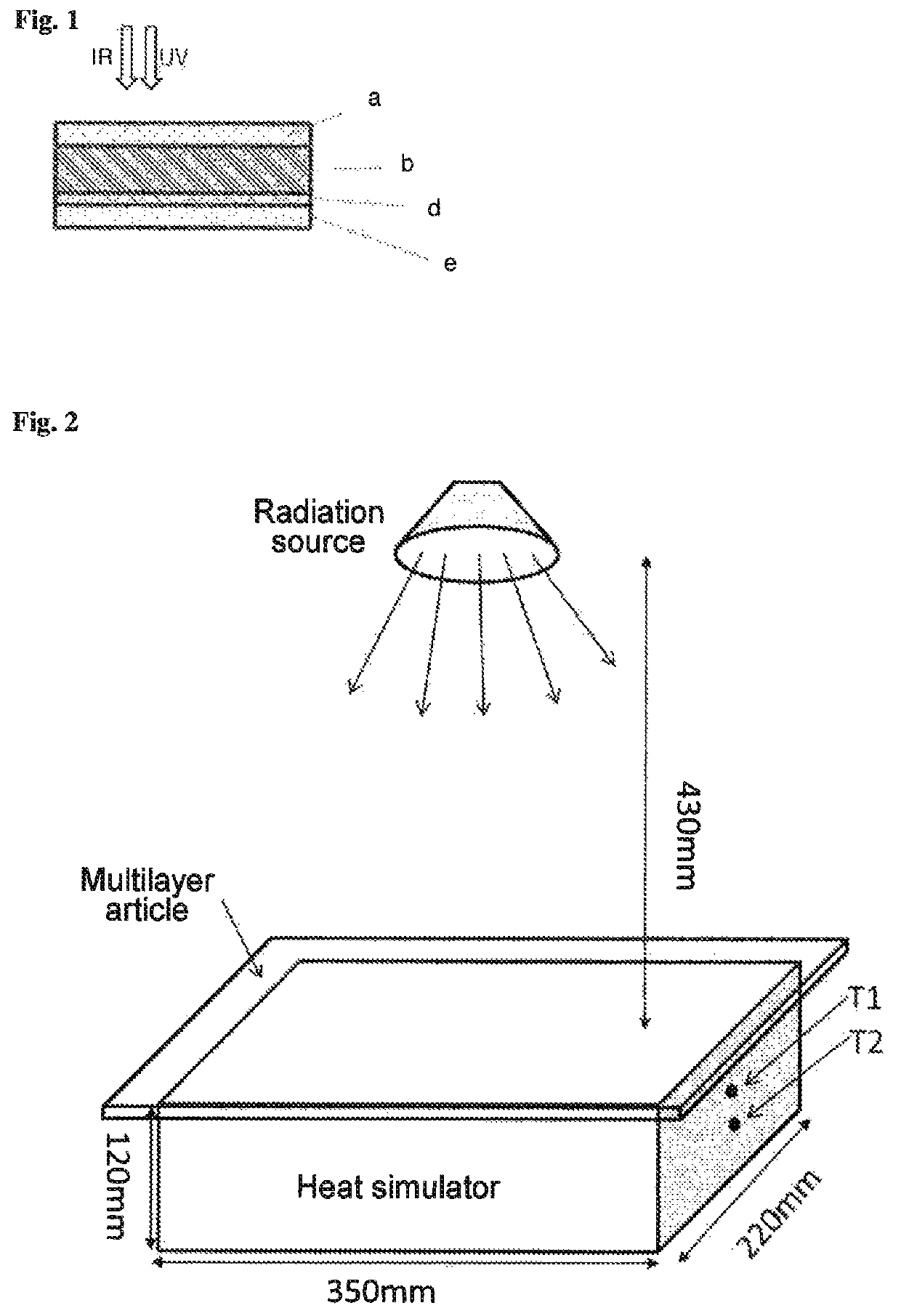Transparent multilayer structure for thermal management
- Summary
- Abstract
- Description
- Claims
- Application Information
AI Technical Summary
Benefits of technology
Problems solved by technology
Method used
Image
Examples
example 1
Comparative Example
[0241]The heat simulator box was covered with a 4 mm-thick injection-molded polycarbonate sheet of substrate 1.
example 2
Comparative Example
[0242]The heat simulator box was covered with a 4 mm-thick injection-molded polycarbonate sheet of substrate 2.
example 3
Comparative Example
[0243]The heat simulator box was covered with a multilayer article composed of a 4 mm-thick layer of injection-molded substrate 2 and a layer sequence in the form of F1. The metal-containing foil was thus applied to the top side of substrate 2. “Top side” (i.e. “top”) here and hereinafter means the side facing toward the radiation source. The metal layer was thus laminated onto substrate 2 and hence enclosed between the carrier film of F1 and a layer of substrate 2.
PUM
| Property | Measurement | Unit |
|---|---|---|
| Fraction | aaaaa | aaaaa |
| Fraction | aaaaa | aaaaa |
| Fraction | aaaaa | aaaaa |
Abstract
Description
Claims
Application Information
 Login to View More
Login to View More - R&D
- Intellectual Property
- Life Sciences
- Materials
- Tech Scout
- Unparalleled Data Quality
- Higher Quality Content
- 60% Fewer Hallucinations
Browse by: Latest US Patents, China's latest patents, Technical Efficacy Thesaurus, Application Domain, Technology Topic, Popular Technical Reports.
© 2025 PatSnap. All rights reserved.Legal|Privacy policy|Modern Slavery Act Transparency Statement|Sitemap|About US| Contact US: help@patsnap.com

